Patrick Wilson Art Online Gallery
In This Gallery
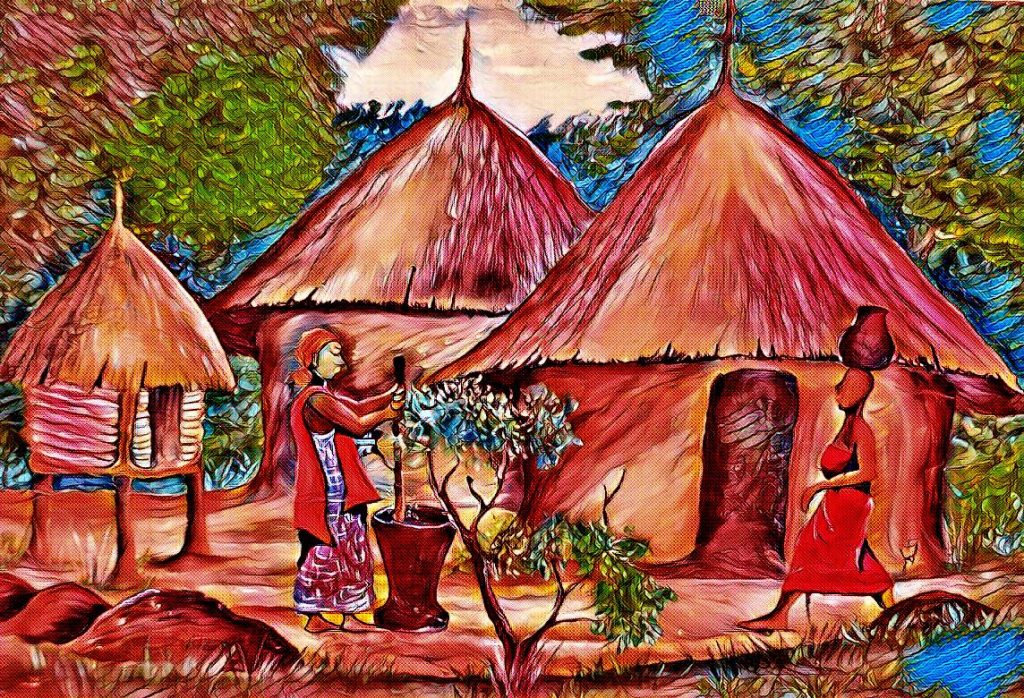
African Traditional HomeStead Done By Patrick Wilson
African traditional homesteads have been a popular subject for paintings, both by African artists and artists from around the world. These paintings capture the beauty, cultural richness, and way of life associated with these homesteads. The artworks often showcase the architectural details, natural surroundings, and the people who inhabit these spaces. Here’s an overview of what an African traditional homestead painting might entail:
Subject and Composition: The painting would likely focus on depicting the traditional homestead itself, including its various structures, layout, and the overall ambiance of the setting. The composition might also include people engaged in daily activities or cultural rituals.
Architectural Details: The artist might pay close attention to the architectural elements of the homestead, such as the construction materials, thatch roofs, mud walls, and unique design features that are characteristic of the region.
Natural Environment: The painting may portray the natural environment surrounding the homestead, which could include trees, vegetation, and the landscape that is an integral part of the setting.
Cultural Context: The painting could convey cultural elements, such as traditional clothing, adornments, and artifacts that provide insights into the community’s way of life and values.
Colors and Textures: Artists might use a vibrant color palette to capture the lively atmosphere of the homestead. Textures of mud walls, thatch, and other materials could be rendered realistically to add depth to the artwork.
Human Presence: Including people in the painting brings a sense of life and activity to the scene. Individuals engaged in daily chores, social interactions, or cultural practices can add narrative and emotion to the artwork.
Symbolism: Paintings of African traditional homesteads may include symbolic elements that represent cultural beliefs, spirituality, and the connection between people and nature.
Light and Shadow: The play of light and shadow can enhance the visual impact of the painting, illuminating certain areas and creating a sense of depth.
Artistic Style: Artists may employ various styles, such as realism, impressionism, or abstraction, to interpret the homestead scene in their unique way.
Cultural Diversity: African traditional homesteads vary across regions and cultures. Paintings could showcase the diverse architectural styles, practices, and lifestyles of different communities.
Narrative and Storytelling: Some paintings might convey a specific story or moment in the life of the homestead, giving viewers a glimpse into the daily routines, celebrations, or traditions of the community.
Paintings of African traditional homesteads provide a visual representation of the culture, heritage, and way of life of various African communities. They offer viewers an opportunity to connect with the rich history and traditions of these societies and appreciate the beauty and complexity of their living environments.
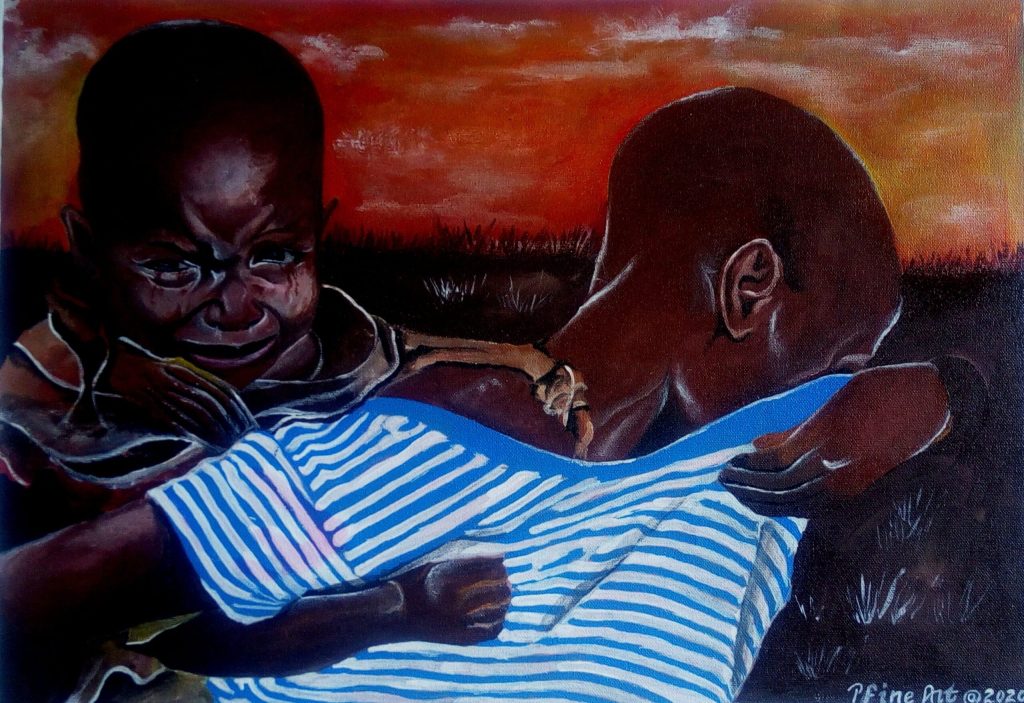
Despair African Art By Patrick Wilson
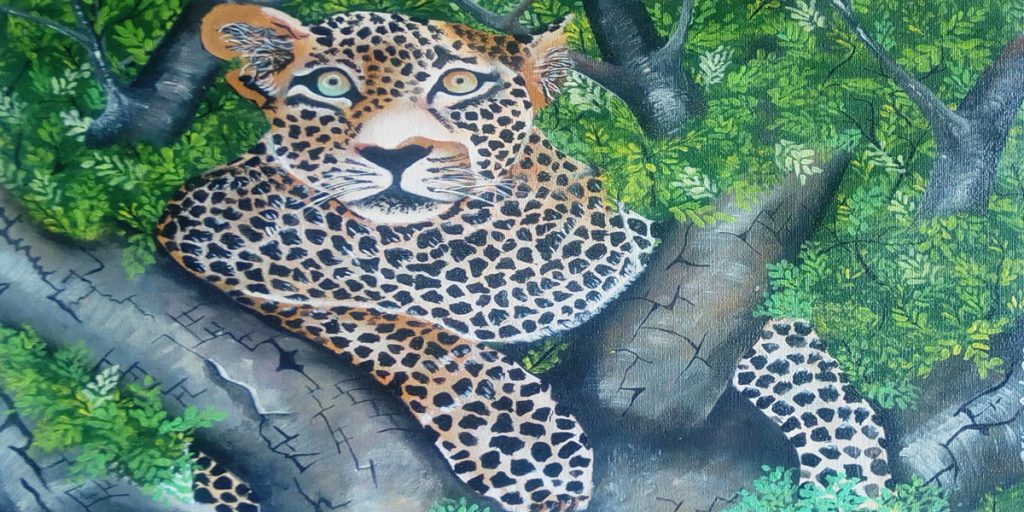
WildLife Art By Patrick Wilson
Wildlife African art is a genre that captures the beauty and diversity of Africa’s wildlife through various artistic mediums. It celebrates the continent’s rich fauna, including iconic animals like lions, elephants, giraffes, zebras, and more. Wildlife African art often highlights the intricate relationships between animals, nature, and human communities. Here’s an overview of what you might find in the realm of wildlife African art:
Subject and Animals: Wildlife African art typically features a variety of animals that are native to the African continent. These animals can be depicted in their natural habitats, engaging in behaviors, or as standalone portraits.
Artistic Mediums: Artists create wildlife African art using diverse mediums such as paintings, drawings, sculptures, woodcarvings, textiles, and even digital art. Each medium offers a unique way to capture the beauty of African wildlife.
Depiction of Nature: Beyond animals, these artworks might showcase the landscapes, ecosystems, and plant life that define the animals’ habitats. This broader context adds depth to the art.
Symbolism and Cultural Significance: In some cases, African wildlife art carries symbolic meanings tied to cultural beliefs, stories, and myths. Animals can hold spiritual significance and convey lessons from traditional folklore.
Conservation Message: Many contemporary wildlife African artists use their work to raise awareness about conservation issues and the need to protect endangered species and their habitats.
Realism and Interpretation: Artists might choose to depict animals with a high degree of realism, capturing intricate details, textures, and expressions. Others might opt for more interpretative or abstract styles.
Color Palette: African wildlife art often features vibrant and earthy colors that reflect the natural beauty of the continent. Artists might use warm tones to evoke the warmth of the African landscape.
Ethnic and Regional Variations: Different African cultures and regions have their own artistic styles and representations of wildlife. This leads to a diverse array of interpretations in the art.
Tribute to Biodiversity: African wildlife art serves as a tribute to the incredible biodiversity of the continent, showcasing not only the charismatic megafauna but also the smaller creatures that play vital roles in the ecosystem.
Educational and Inspirational: Wildlife art can be both educational and inspirational. It encourages viewers to appreciate the magnificence of African wildlife while also emphasizing the importance of its conservation.
Tourism and Cultural Exchange: Wildlife art contributes to cultural exchange and tourism. It invites people to explore the beauty of African landscapes and wildlife through art.
In summary, wildlife African art is a powerful way to connect with the natural world and the rich animal life found on the African continent. It’s a celebration of Africa’s remarkable biodiversity and its complex relationship with human societies. Whether conveying cultural stories, promoting conservation, or showcasing the sheer beauty of the animal kingdom, wildlife African art is a testament to the enduring bond between people and nature.
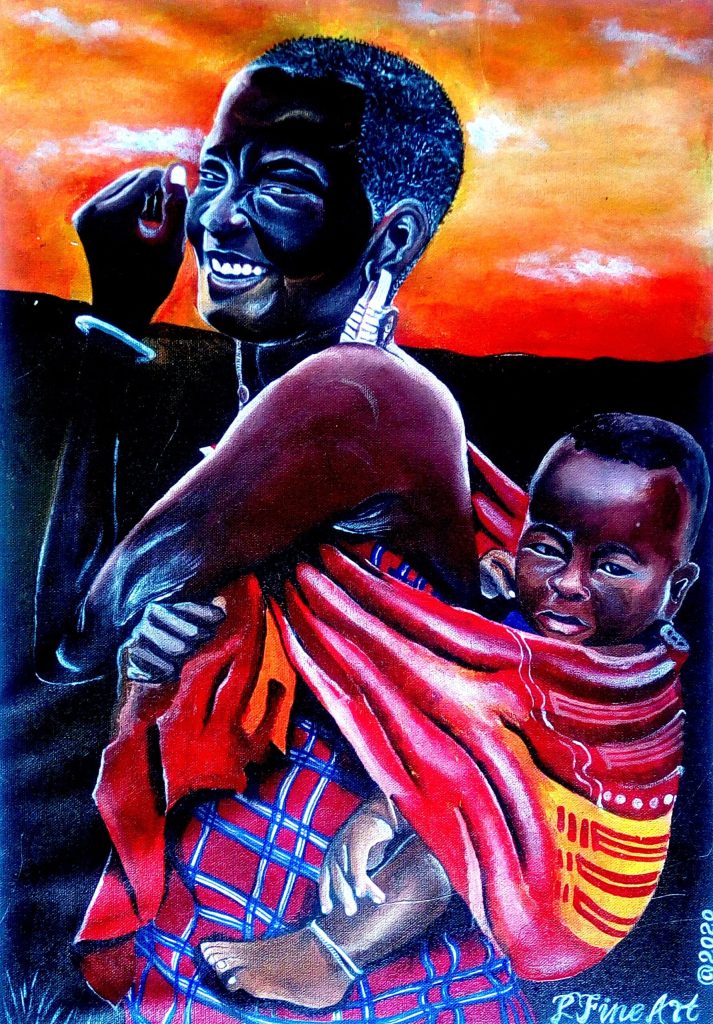
AfricanTraditional Tribal Art
African traditional tribal art refers to the artistic expressions and cultural artifacts created by various indigenous tribes and communities across the African continent. This art is deeply intertwined with the social, spiritual, and cultural aspects of the tribes and often serves multiple functions within the community. African tribal art is known for its diversity, symbolism, and connection to the collective heritage of each group. Here are key aspects to understand about African traditional tribal art:
Diverse Styles and Techniques: African tribal art encompasses a wide range of artistic styles and techniques. Each tribe has its own unique visual language, characterized by specific motifs, materials, and methods of creation.
Functional and Ritualistic: Much of African tribal art serves functional and ritualistic purposes. It is used in ceremonies, rituals, initiations, and everyday life. Masks, sculptures, textiles, and adornments play integral roles in these contexts.
Spiritual Significance: Tribal art often holds spiritual significance. Masks and sculptures, for example, can represent ancestors, deities, or spirits and are used to communicate with the spiritual realm.
Cultural Identity: Tribal art reflects the identity and history of a specific group. Symbols, patterns, and designs often convey cultural beliefs, social roles, and communal values.
Materials: African tribal artists use a variety of locally available materials, such as wood, clay, metal, ivory, beads, and textiles. These materials are often sourced from the immediate environment.
Symbolism and Meaning: Every element in tribal art carries symbolic meaning. Colors, patterns, and forms have cultural significance and convey messages understood within the tribe.
Oral Tradition: Many tribal artworks are part of the oral tradition, conveying stories and history. They may depict events, ancestors, myths, and the tribe’s relationship with nature.
Social Roles: Artistic production often involves different members of the community. Skilled artisans create the pieces, while the community members may participate in rituals and celebrations where these artworks are used.
Regional Variation: African tribal art varies greatly across regions and tribes. Different communities have distinct styles influenced by their geographic location, resources, and interactions with neighboring groups.
Modern Interpretations: While tribal art has traditional roots, contemporary artists often reinterpret these forms, adapting them to contemporary contexts while preserving cultural significance.
Art and Daily Life: Tribal art blurs the lines between art and practicality. Many objects, such as stools, utensils, and textiles, are both functional and artistic.
Global Influence: African tribal art has inspired artists and movements worldwide. It has influenced Western artists like Picasso and modern art movements like Cubism.
In summary, African traditional tribal art is a testament to the rich cultural heritage, creativity, and spirituality of various indigenous communities across the continent. It embodies a deep connection to the past, a celebration of communal values, and a bridge between the tangible and the spiritual realms. The diversity and significance of tribal art contribute to a deeper understanding of the complex tapestry of African societies.
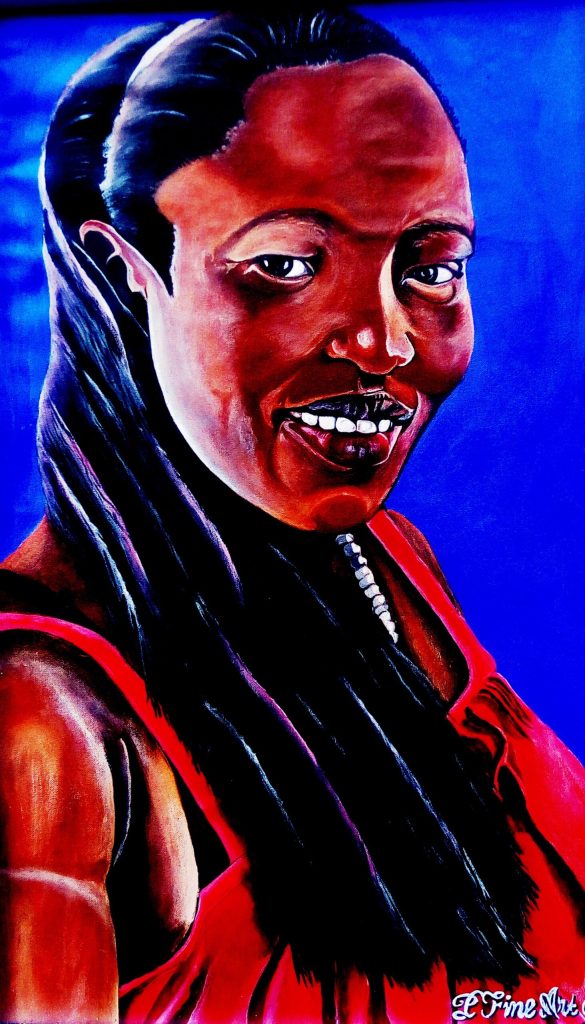
Portrait Of An African Lady Done By Patrick Wilson
